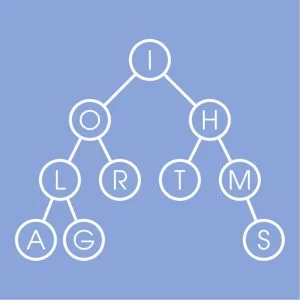
Algorithms: Design and Analysis, Part 2
FREE
Welcome to the self paced course, Algorithms: Design and Analysis, Part 2! Algorithms are the heart of computer science, and the subject has countless practical applications as well as intellectual depth. This course is an introduction to algorithms for learners with at least a little programming experience. The course is rigorous but emphasizes the big picture and conceptual understanding over low–level implementation and mathematical details. After completing this course, you will have a greater mastery of algorithms than almost anyone without a graduate degree in the subject. Specific topics in Part 2 include: greedy algorithms (scheduling, minimum spanning trees, clustering, Huffman codes), dynamic programming (knapsack, sequence alignment, optimal search trees, shortest paths), NP–completeness and what it means for the algorithm designer, analysis of heuristics, local search. Learners will practice and master the fundamentals of algorithms through several types of assessments. There are 6 multiple–choice problem sets to test your understanding of the most important concepts. There are also 6 programming assignments, where you implement one of the algorithms covered in lecture in a programming language of your choosing. The course concludes with a multiple–choice final. There are no assignment due dates and you can work through the course materials and assignments at …
Instructor Details
Courses : 5
Specification: Algorithms: Design and Analysis, Part 2
|
5 reviews for Algorithms: Design and Analysis, Part 2
Add a review Cancel reply
This site uses Akismet to reduce spam. Learn how your comment data is processed.

| Price | Free |
|---|---|
| Provider | |
| Duration | 18 hours |
| Year | 2021 |
| Level | Intermediate |
| Language | English |
| Certificate | Yes |
| Quizzes | No |

FREE






Anonymous –
I took similar courses in university for my Master of Science. But it was many years ago, few graph algorithms were completely new to me. Quite challenging assignments will take a bit of your free time. Overall, it was nice to feel like a student again.
Anonymous –
Very good course, just like part I. This course seemed much harder than part I, but it was still doable. Prof Roughgarden does a very good job teaching the material.
Anonymous –
Prof. Roughgarden is unbelievable professional. He does amazing job.
Life is Study –
Part 2 picks up where part 1 left off, so completing part 1 fist is highly recommended. Major topics covered in part 2 include minimum spanning tree algorithms, the knapsack problem, dynamic programming, shortest path problems, the traveling salesman problem, P vs. NP and NP completeness and heuristics for hard problems.
Part 2 is considerably harder than part 1 and the algorithms you write for homework need to be implemented well to get answers in a reasonable amount of time and without exceeding your system’s memory. It is possible to complete the class using a high level language like Python, but you’ll probably have to spend a bit more time tweaking your code to get solutions in a reasonable amount of time. In the end I was able to solve all the programming assignments, but this one is definitely not for the feint of heart. I’d like to post some of the algorithms I wrote for the course, but it is against the Coursera honor code to make solutions available to others.
My biggest gripe with the class is that the coverage of the P vs. NP question and NP completeness is brief, so students don’t gain a deep understand of what P vs. NP and NP completeness really mean. The introduction to theoretical computer science by Udacity provides a much more through overview of that particular topic. That said, the overall quality of the instruction and assignments in this course are top notch and I’d highly recommend parts 1 and 2 to anyone looking for a solid foundation in algorithm design and analysis.
Luiz Cunha –
In my top 3 MOOC.
Great content and delivery by Prof. Roughgarden on a rather dry topic.
The videos are great quality.
The assignments are very challenging but interesting.
I just wished this MOOC would be longer